Sound Bites - Issue #75 - April 2020 #333

Issue #75 April | 2020
Community Education's Premiere Online Magazine
On the Cover
Community Ed Meeting the Covid-19 Challenge!
 Alice Meyering
Alice Meyering
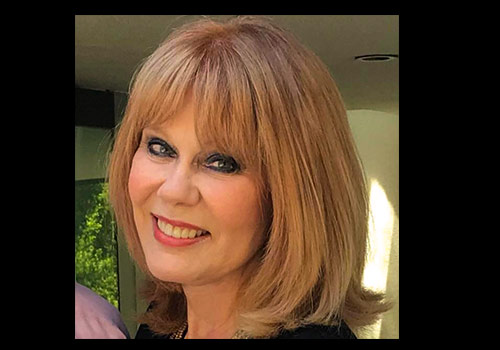 Architecture lecturer Eleanor Schrader now online!
Architecture lecturer Eleanor Schrader now online!
 Now online -- 30 of 45 classes took the challenge
Now online -- 30 of 45 classes took the challenge
By Alice Meyering, Program Coordinator of Community & Contract Education
During this challenging crisis, education, professional development and personal enrichment are more important than ever. That is why I am so proud that our instructors and students have risen to the occasion to preserve most of our learning opportunities through online education.
We have successfully switched to online formats for about 30 of the 45 classes that were in session in the middle of March. That was when Community Ed, following the lead of SMC's academic program, decided to close down in-classroom instruction at least until mid-June because of the coronavirus emergency.
On Tuesday, March 10, I had given our instructors a heads up about the possibility of classes going online, but on Thursday March 12, it was confirmed that for the next few days classes were canceled at SMC so that all instructors were to get working to switch to an online format. I asked them to do the heavy lifting, make the change, and communicate with students with details regarding switching to an online format. But I also gave them help--referring them to PJ Abode, our tech whiz and online czar--who could assist them through this hasty transition. Instructors were also given the opportunity to take impromptu Zoom workshops at SMC to aid them.
Our instructors rose to the challenge. They were real troupers. One in particular responded so quickly I was almost flabbergasted. Eleanor Schrader had an architecture lecture scheduled Saturday, March 14 on "The Western Works of Frank Lloyd Wright." She got a call the day before informing her of the Zoom training at the SMC campus. She attended the session on Friday the 13th at 1 p.m., returned home and set up her Zoom account, practicing several times to make sure all would go well. She then contacted her students, giving them the Zoom information so they could all log on the next day to her online lecture.
And guess what? Not only did all her 25-plus students tune in on Zoom, she actually got additional registrations by reaching out to her contacts via social media!
"I've been wanting to do this for a long time and I'm happy as a clam that Zoom is the perfect platform to accomplish online learning," Eleanor told me. "This has opened so many doors for me."
But Eleanor isn't the only one. Just to give other examples (and there are many), Bryan Ricci switched quickly to an online format for his "Paint Anything!" course, as did Christy Wilhelmi with her "Organic Gardening" class. And Davida Rapport, our tarot instructor, has recorded her classes so her students can access them online.
Clearly, some classes, by their very nature, could not be converted to an online format. They include photography and dance courses.
As to future classes that begin this month or in May--about 70 in all --we are hoping to convert as many as possible to online formats. Some, such as Glass Fusing, are simply not set up to work online. In those cases, we will provide full refunds to students who request it or provide the opportunity to transfer to future classes. And there remain uncertainties about our summer session.
Working with instructors, students and PJ (a big thanks to him!), I've been overwhelmed by our teamwork. Honestly, the response has restored my faith in humanity.
I hope you all stay healthy and safe and continue to pursue your educational, professional development and personal enrichment goals. If you have any questions, please feel free to contact me at commed@smc.edu. We will get through this together!
P.S. Just as a reminder: the most effective way for us to reach you is by email, so please make sure the email address that you used when you registered for our classes is correct and the one you actually use so you will get the information you need regarding your classes and notices from your instructor.

What's Next:
You Guessed It, Our Annual Photo Contest Deadline!
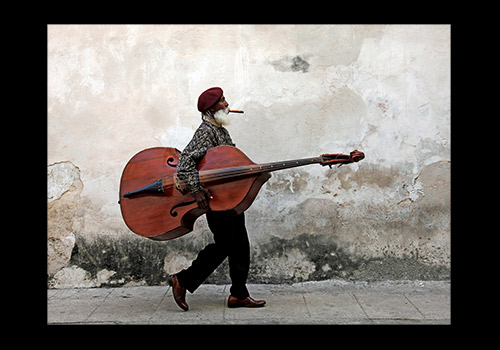 Laurie McCormick - Cuban Cool
Laurie McCormick - Cuban Cool
 Frank Damon - I Dare You to Touch Me!
Frank Damon - I Dare You to Touch Me!
 Mara Zaslove - Sand Painting
Mara Zaslove - Sand Painting
Despite the current coronavirus pandemic, we are going ahead with our annual Student Photo Contest. And why not? The whole contest takes place online, and we need to continue to have as much normalcy--and uplifting events--as possible.
So, there is less than a month left to submit your images to the contest, which has grown in both quantity and quality of submissions since it was launched five years ago.
Open to all current and former students, the contest will have a winner and first and second runners-up. The winner's image will be the cover of the Fall 2020 class schedule and will be featured in this newsletter, Sound Bites, and on social media.
Altogether, the 2019 contest drew 207 photos from 50 students and/or alumni. The submissions were judged at two levels to boil the contest down to three finalists for public voting, which tallied a record 1,050 votes.
The winner of last year's contest was Laurie McCormick's "Cuban Cool." The first runner-up was Frank Damon for his photograph "I Dare You To Touch Me!," and Mara Zaslove's "Sand Painting" was the second runner-up.
All current and former students--regardless of whether a photo student with Community Ed or not--are encouraged to submit their best work. Our 2017 winner, Victoria Bleeden, had not taken any photo classes at Community Ed when she entered her image for the 2017 contest.
The rules and submission instructions are at this link. Get your submissions in now!

Recipe City:
Stinging Nettle & Potato Soup
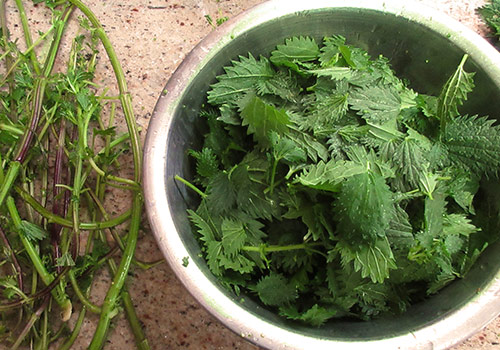 Nettle Soup
Nettle Soup
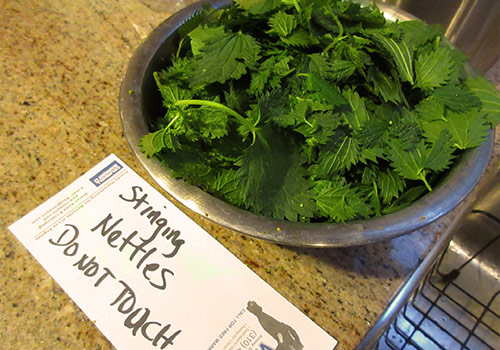


Christy Wilhelmi, who is SMC Community Ed's Organic Gardening instructor, provides an amazing recipe (yes, with stinging nettles! Who knew?)
By Christy Wilhelmi, Organic Gardening instructor
I once witnessed a friend making Stinging Nettle Soup with some nettles from the wild, an onion, a potato and some lemon juice. It was delicious, and I put it on my list of things to learn to make myself. That was years ago.
This year, as the nettles popped up in my community garden, I decided this was the year. I found a simple recipe with the least amount of ingredients and tested the process. Here are my findings:
Recipe inspired by Getty Stewart
Ingredients
- 6 cups lightly packed stinging nettles
- 1/2 tbsp canola oil
- 1 onion, chopped (we used a few shallots)
- 2 cloves garlic, minced (we used garlic oil to make it lower FODMAP)
- 4 medium potatoes, cut into small cubes
- 5 cups soup stock (we used water & nutritional yeast)
- salt and pepper to taste
- we added lemon juice to taste
- 1 tbsp chopped dill (optional)
Method
First, slide your hands into a pair of rubber gloves. Stinging nettles sting. That's a fact. Don't try to be a hero. THICK GLOVES. Now, rinse those nettles a few times in a bucket of water.
Separate the leaves from the stems to cook them separately. Note: let me just say right off the bat that if your nettles are more mature, the stems will be too fibrous to use. I found out the hard way, while trying to puree the soup with an immersion blender. If using older nettles, plan on using a high-speed blender instead, or leave the mature stems out.
Next
Heat the oil over medium heat and sauté your onions or shallots and cook for 2-3 minutes. Add the potatoes and garlic (if using – hold garlic oil until later) and continue cooking another 5 minutes. Then add the broth and the nettle stems. Nettle stems take longer to cook than the leaves, so start by adding those.
Bring the whole thing to a boil, then reduce to simmer 10-15 minutes, until potatoes are soft. Drop in your nettle leaves and stir. Cook for an additional 2 minutes until the leaves are just wilted. The stingers will be neutralized, leaving behind bright green leaves and stems chock-full of vitamins and chlorophyll. Then you're ready to puree!
Once pureed, you can adjust the thickness with water or more broth. And it bears repeating that if your stems were too fibrous, use a real live high-speed blender rather than a stick or immersion blender. Go for the big guns. That said, don't over blend, or your potatoes will turn gelatinous. Very unpleasant.
Add salt and pepper and a squeeze of lemon juice to taste. Sprinkle with dill if you like dill. Serve with crusty bread or crackers.

New Perspectives:
Online From the Trenches
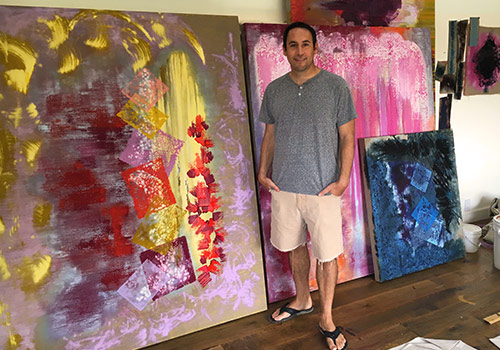 Bryan Ricci, PAINT ANYTHING instructor
Bryan Ricci, PAINT ANYTHING instructor
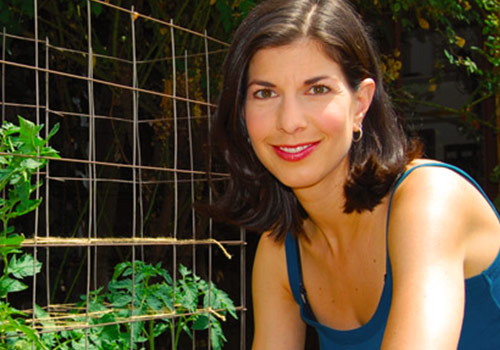 Christy Wilhelmi, ORGANIC GARDENING instructor
Christy Wilhelmi, ORGANIC GARDENING instructor
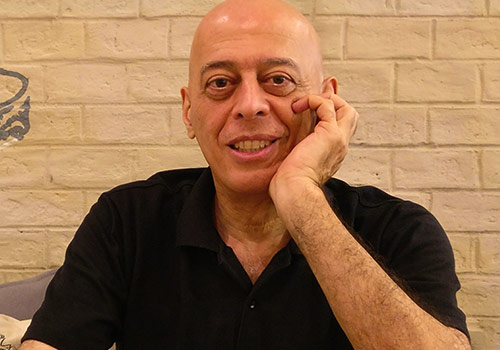 Community Ed's online czar PJ Abode assisted in transitioning to online
Community Ed's online czar PJ Abode assisted in transitioning to online
Within days in mid-March, SMC Community Ed instructors were able to convert 30 of the 45 classes in session at that time to an online format. Here is the story of two of those instructors and of our "online czar" PJ Abode, who provided assistance to instructors as they converted to online formats.
Bryan Ricci, "Paint Anything!"
I switched to online learning for the third class. I used Facebook Live for the first week and thought it was ok. However, not all of the students use Facebook and I was trying to leave that format. We used Zoom for the last two weeks and it was fairly smooth, though it took a little getting used to.
We had a little over 20 people in the class but lost a few when we switched to online. A few people dropped out, but the people that stuck with it seem happy.
I've been painting almost throughout the whole class time, Bob Ross style. I actually painted some happy trees last class!
We started two weeks pre-pandemic and didn't skip a class going virtual.
My advice to other instructors with upcoming classes is to stay safe and if you're able, try the online format. It's different, but I think it's really exciting and needed these days.
Christy Wilhelmi, "Organic Gardening"
I switched to online for the third week of classes out of four. First time I used Google Hangout, but then I signed up for Zoom for week four.
Both online classes worked pretty well. I have a white board at home and I was able to expand my handout materials before class to fill in the gaps that in-person instruction offers.
I had 24 signed up this series and about 17 switched over to online, but several had already told me they were going to miss the last two classes even before Coronavirus hit. So I imagine it would have been more.
We had to cancel our field trip to the SMC Learning Garden after class three, so I sent the class a behind-the-scenes video from my garden instead. The classes all take place in the classroom.
If I had known that you can sign off Zoom for a few minutes and sign back on the same meeting to bypass the 40-minute time limit, I would have done that instead of signing up for the paid service. That said, I plan on using it for my business anyway to record consultations and send them to clients for their records.
I hope more of the world switches to telecommuting so we can continue to reduce pollution and reverse climate change.
PJ Abode, Web Consultant & Developer
At first, we wanted to allow flexibility in choice of online platforms, so I researched Facebook, YouTube, Skype and Zoom. As some people did not use Facebook and didn't want to, we began to narrow down the recommended options based on what limitations were placed on the free versions of the meeting software. Key for our recommended platform was that it must be free, simple to use, and with support if needed. In the end, we felt Zoom met the key requirements.
Zoom was designed for meetings/collaboration and had the tools to be effective in that area. It had a free plan, whose only major restriction was that each session could not be more than 40 minutes. When I found you can enter the same meeting multiple times, that no longer seemed like a restriction, as taking a 5-minute break between sessions is probably a good thing in online learning. And for the last key items, it was easy to use, had good support, and has been out for nine years, so there are a lot of tutorials on the Zoom site, YouTube and blogs.
At this point I haven't received too much feedback from instructors but a few, who were new to online and needed initial support in hosting a class, found it went better than they had expected, and in fact was "fun"--now they are looking to integrate more advanced features into their class, like sharing apps, like PowerPoint presentations or using a whiteboard.
If the instructor pays for the paid subscription, videos can be saved to the cloud for future review. If an instructor uses the free Zoom plan, then the meeting can be saved to the instructor's computer and then uploaded to YouTube or other video platforms, with private access to class members. So whatever limitation it has there seemed to be a work-around.
Zoom also has a Chat panel where students can ask questions and get answers, if someone monitors the Chat, then message responses can be in "one-on-one" Otherwise, the instructor could glance at the chat panel and verbally respond to the question.
Though we at least for now have settled on Zoom, there are other meeting platforms. In the current situation we are allowing instructors with the agreement of their students to select the platform with which they feel comfortable. As the situation evolves, if we find a better teaching platform, we would change our recommendations.
Go to the Community Ed website now and start exploring your avenue of commitment. You can also email us at commed@smc.edu.

 Donate Today!
Donate Today!
